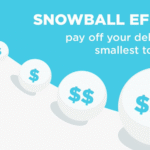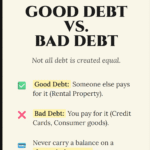This article rebrands Frugal Living. It moves away from the stigma of “being cheap” and frames it as “resourcefulness” and “value optimization,” which is a highly effective angle for 2025.

The Ultimate Guide to Frugal Living: How to Save Money Without Making Your Life Miserable
When most people hear the words “frugal living,” they cringe.
They imagine washing out Ziploc bags to reuse them. They imagine turning the thermostat down to 60 degrees in the winter and wearing three sweaters inside. They imagine a life of deprivation, where you never eat at a restaurant, never buy a latte, and never have any fun.
If that is your definition of frugality, no wonder you aren’t doing it. That sounds miserable.
But true frugality isn’t about deprivation; it is about resourcefulness. It isn’t about being cheap; it is about being efficient.
Being “cheap” is trying to spend as little money as possible, often at the expense of quality, time, or relationships (e.g., tipping poorly or buying shoes that fall apart in a month). Being “frugal” is prioritizing your spending so you can lavishly spend on what you love while ruthlessly cutting costs on the things you don’t care about.
In an era of high inflation and rising housing costs, frugality is the most powerful weapon you have to build wealth. In this guide, we will cover the core pillars of a frugal lifestyle that will save you thousands of dollars a year—without sucking the joy out of your life.
Part 1: The Philosophy of Value (The “Boots” Theory)
Before we get to the tactics, we need to fix the mindset. The core tenet of intelligent frugality is captured perfectly by the “Sam Vimes ‘Boots’ Theory of Socioeconomic Unfairness” (popularized by author Terry Pratchett).
The theory goes like this: A wealthy man buys a pair of $200 boots. They are high quality, leather, and last for 10 years. His cost is $20 per year. A poor man cannot afford the $200 upfront, so he buys a cheap pair of $50 boots. They leak and fall apart after one year. Over the same 10-year period, the poor man spends $500 on boots and still has wet feet.
Frugal Rule #1: Price is what you pay. Value is what you get. Sometimes, spending more money upfront is the frugal choice.
- Frugal: Buying a high-quality Toyota that runs for 300,000 miles.
- Cheap: Buying a clunker for $1,000 that requires $500 repairs every month.
- Frugal: Buying a bulk pack of toilet paper at Costco (high upfront cost, low unit cost).
- Cheap: Buying single rolls at the bodega (low upfront cost, astronomical unit cost).
Your goal is to lower your Cost Per Use (CPU), not just the price tag.
Part 2: Mastering the Grocery Bill (The Biggest Leak)
For most households, food is the third largest expense (after housing and transportation), but it is the number one most controllable variable. You cannot easily change your rent tomorrow, but you can slash your grocery bill by 30% instantly.
1. The Power of “Generics”
Brand loyalty is a marketing tax. The FDA regulates food safety and ingredients, meaning the “Store Brand” ibuprofen is chemically identical to the name brand Advil. The “Store Brand” oats are often processed in the exact same facility as Quaker Oats.
- The Switch: Challenge yourself to buy the generic version of everything for one month.
- The Result: You will likely find that 90% of them taste exactly the same. For the 10% that don’t (maybe you really love Heinz Ketchup), you can switch back. This habit alone can save $1,000+ per year for a family of four.
2. Meal Planning vs. The “Hungry Shopper”
If you walk into a grocery store at 5:00 PM on a Tuesday without a plan and on an empty stomach, you have already lost. You will buy convenience foods, snacks, and items that don’t go together.
- The Strategy: Plan your meals on Sunday. Write a list. Stick to the list.
- Curbside Pickup: If you struggle with impulse buying (the “Target Effect”), use the store’s app to order groceries for pickup. It prevents you from seeing the end-cap displays designed to make you spend money.
3. The “Pantry Challenge”
We often buy food because we “feel like” we have nothing to eat, even though the freezer and pantry are full of pasta, frozen veggies, and canned beans.
- The Habit: Once a month, declare a “Pantry Week.” You are not allowed to go to the grocery store (except for milk/eggs/fresh produce). You must cook meals using only what you already have at home. This reduces food waste and acts as a “reset” button for your budget.
Part 3: The 24-Hour Rule (Curing the Impulse)
We live in an “Instant Gratification” economy. Amazon promises One-Day delivery. Apple Pay lets you buy with a face scan. The friction of spending money has been removed.
To be frugal, you must re-introduce friction.
The Rule: If you see a non-essential item you want to buy (shoes, a gadget, a new lamp), you must wait 24 hours before buying it.
- Leave it in the online cart.
- Walk away from the store shelf.
Why it works: Impulse buying is emotional. It is a dopamine hit. After 24 hours, the emotion fades and the rational brain (“Prefrontal Cortex”) turns back on. You will find that 80% of the time, the urge to buy the item is gone the next morning. You didn’t really want the item; you just wanted the dopamine.
The 30-Day Rule (Advanced): For items over $100, wait 30 days. Put it on a “Wish List.” If you still want it 30 days later, you are allowed to buy it. Most of the time, you will forget you even put it on the list.
Part 4: The Subscription Audit (Death by a Thousand Cuts)
The modern economy has shifted from “ownership” to “usership.” Everything is a subscription.
- Netflix ($15)
- Spotify ($11)
- Gym ($40)
- Amazon Prime ($14)
- iCloud Storage ($3)
- That random app you downloaded in 2022 ($5)
Individually, these seem cheap. Together, they can easily total $200+ a month. That is $2,400 a year—the price of a nice vacation.
The Strategy: Print out your last month’s bank statement. Highlight every recurring charge. Ask two questions:
- Do I use this? (Be honest. When was the last time you went to the gym?)
- Does it bring me value equal to the cost?
The “Rotate” Method: You don’t need Netflix, Hulu, Disney+, and HBO Max all at the same time. Pick one. Subscribe for a month, watch the shows you want, then cancel it and switch to the next service. This is “Serial Streaming.” You see all the content, but you only pay for one service at a time.
Part 5: The Library (The Forgotten Goldmine)
If you think the library is just for dusty old books, you are living in 1995. The modern public library is the ultimate frugal hack.
What you can get for free:
- Audiobooks & E-books: Through apps like Libby or Overdrive, you can download books directly to your Kindle or phone without paying for Audible or buying hardcovers.
- Movies: Many libraries offer free access to Kanopy, a streaming service with high-quality films and documentaries.
- Museum Passes: Many libraries offer free or discounted passes to local zoos, museums, and aquariums.
- “Library of Things”: Some libraries lend out cake pans, power tools, sewing machines, and even Wi-Fi hotspots. Check your local branch.
Every time you borrow instead of buy, you save 100% of the cost and you don’t have to store the item in your house forever.
Part 6: Lowering the “Vampire Costs” (Energy & Bills)
Frugality extends to your household infrastructure.
1. Energy Vampires
Electronics draw power even when turned off. This is “phantom load.”
- The Fix: Put your TV, gaming console, and sound system on a smart power strip. When you turn off the TV, the strip cuts power to everything else.
2. The Thermostat Game
Heating and cooling are massive expenses.
- Winter: Lower the thermostat by 2 degrees and wear socks/hoodies. You will acclimate in a few days.
- Summer: Raise it by 2 degrees and use fans.
- Water Heater: Turn your water heater down to 120°F (49°C). Many are set to 140°F by default, which is scaldingly hot and wastes money keeping water overheated.
3. Negotiate Everything
Your internet and insurance rates tend to creep up every year.
- The Script: Call your internet provider. Say, “I’ve been a loyal customer, but my bill has gone up to $80. I see a competitor offering $50 for new customers. Can you match that, or do I need to cancel?”
- They will almost always transfer you to a “Retention Specialist” who has the power to lower your bill. A 15-minute phone call can save you $300 a year.
Part 7: Social Frugality (Keeping Friends While Saving)
The hardest part of frugal living is the fear of missing out (FOMO). If your friends always want to go to expensive brunches or bars, it’s hard to say no.
The Solution: Be the Planner. If you wait for others to plan, they will pick the path of least resistance (usually expensive restaurants). If you plan, you control the budget.
- Host a Potluck: Instead of dinner out ($50/person), host a potluck ($10/person). It’s usually more fun, deeper conversation, and better food.
- The “Drink” Pre-Game: If you are going out, have drinks at home first. Buy a bottle of wine for the price of one glass at a bar.
- Free Activities: Hiking, beach days, free concerts in the park, or game nights.
True friends care about spending time with you, not spending money with you.
Part 8: DIY (Do It Yourself) vs. DIFM (Do It For Me)
We outsource so many basic tasks today. We pay for car washes, lawn mowing, coffee brewing, and nail painting.
Learning a few basic skills is a high-ROI (Return on Investment) activity.
- Coffee: A $5 latte a day is $1,825 a year. Buying a decent coffee maker and a travel mug costs $50.
- Beauty: Learn to do your own manicure or dye your own hair.
- Basic Repair: YouTube is the greatest free university in the world. Before calling a plumber for a clogged drain or a mechanic for a cabin air filter change, watch a 5-minute video. Often, the fix requires a $5 part and 10 minutes of effort.
Caveat: Know your limits. Do not try to DIY electrical work or structural repairs if you don’t know what you are doing. That is “penny wise, pound foolish.”
Part 9: Frequently Asked Questions
Q: Isn’t frugal living just for poor people? A: No. In fact, many millionaires are incredibly frugal. Warren Buffett lives in the same house he bought in 1958. Focusing on value rather than status is how wealthy people stay wealthy.
Q: What if my partner isn’t frugal? A: This is tough. You need to find common ground. Focus on the goals rather than the restriction. Don’t say “We can’t spend money.” Say “If we cut back on dining out, we can afford that trip to Italy next year.” Align your spending with your shared dreams.
Q: Can you be too frugal? A: Yes. If you refuse to go to a close friend’s wedding because you don’t want to buy a plane ticket, or if you skip necessary dental work to save money, you have crossed the line into cheapness. Money is a tool to sustain life, not the goal of life itself.
Conclusion
Frugal living is not a punishment. It is a game.
It is a strategy game where you try to squeeze the maximum amount of happiness out of every dollar. Every time you negotiate a bill, cook a delicious meal at home, or find a designer coat at a thrift store, you win.
The money you save isn’t just numbers on a screen. It’s freedom. It’s the ability to quit a job you hate. It’s the ability to help a family member in need. It’s the ability to retire early.
Start small. Pick one category from this list—maybe the grocery bill or the subscriptions—and optimize it this week. Your future self (and your bank account) will thank you.

















